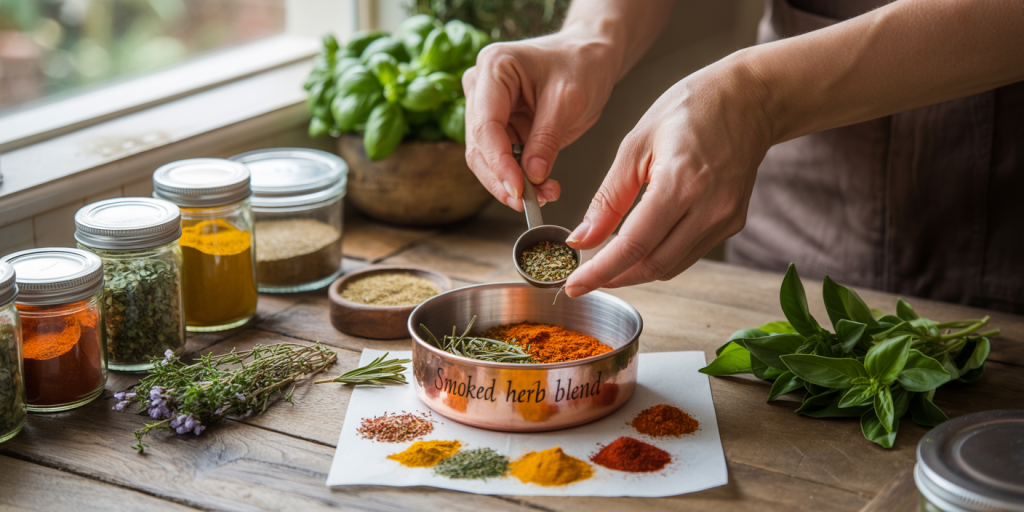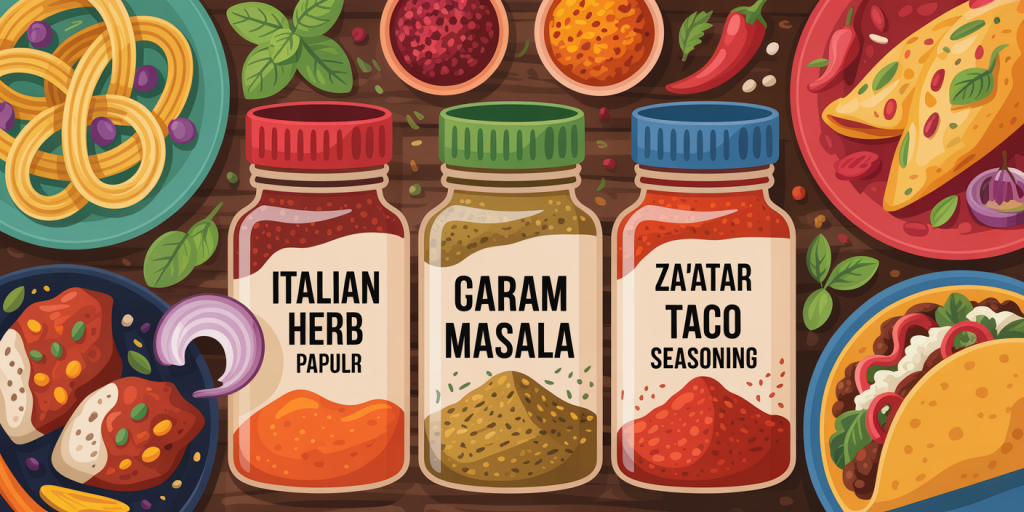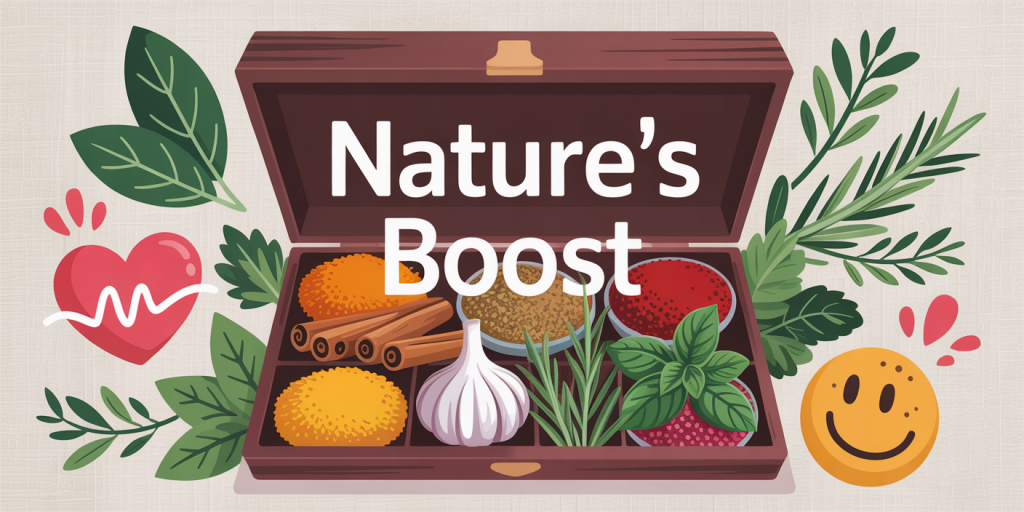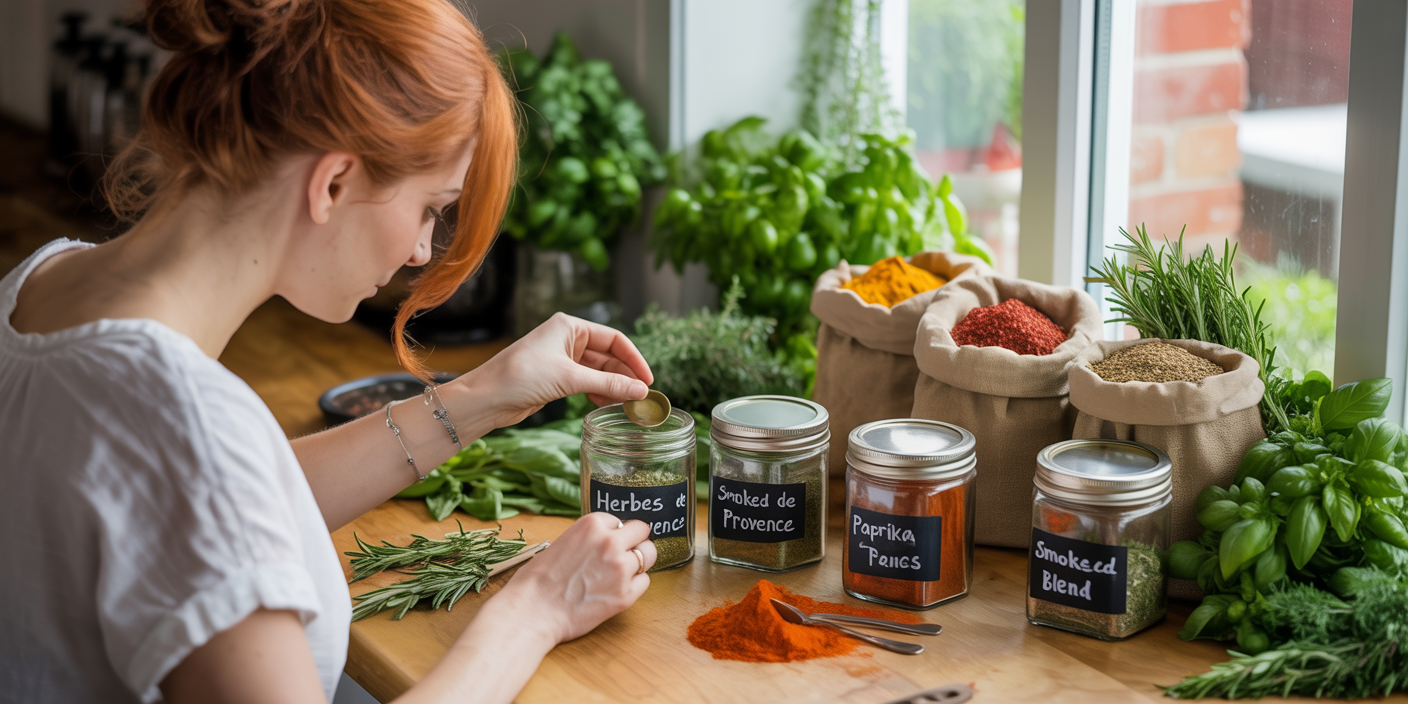Enhancing the taste of a dish often hinges on the right balance of spices and herbs. While pre-packaged seasoning blends can be convenient, making your own DIY seasoning blends offers unparalleled control over flavor, freshness, and nutritional value. Custom seasoning blends allow home cooks and professional chefs alike to tailor dishes to personal preferences or specific cuisines, ensuring vibrant, complex taste profiles that elevate everyday meals.

With a global spice market expected to reach $21.5 billion by 2027 (Grand View Research, 2021), the interest in seasoning blends continues to grow. Crafting your own blends not only enhances flavor but also reduces additives often found in commercial products, such as preservatives, fillers, and excessive sodium. This article delves into practical methods, examples, and the science behind creating DIY seasoning blends that transform ordinary dishes into memorable culinary experiences.
The Art of Crafting Your Own Seasoning Blends
Creating seasoning blends at home begins with understanding ingredient synergy and flavor layering. Typically, blends combine herbs (leafy components), spices (seed, bark, or root parts), salt, and sometimes sugar or acidic powders. Choosing fresh, high-quality spices is crucial since the potency and aroma degrade over time—ground spices, for example, lose significant flavor after six months.

Start by selecting a primary flavor profile: savory and earthy for meat rubs, bright and spicy for Mexican dishes, or aromatic and warm for Middle Eastern cuisine. Experimentation is key, but a basic ratio to follow might be 3 parts spices to 1 part salt, adjusted to taste. For instance, homemade taco seasoning often contains chili powder, cumin, paprika, garlic powder, onion powder, oregano, and crushed red pepper flakes, combined in balanced proportions.
Using small batches ensures freshness and allows you to customize blends for specific dishes. Practical storage involves keeping blends in airtight containers away from heat and light. Labeling with preparation dates helps maintain quality control.
For example, professional kitchens often use bespoke blends suited to signature dishes. The successful restaurant chain “Chipotle” attributes part of its popularity to specific seasoning blends that copycat recipes aim to emulate at home. Crafting your own blends can make everyday casseroles, grilled fish, or roasted vegetables far more flavorful and aromatic, demonstrating the culinary power of seasoning customization.
Popular DIY Seasoning Blends and Their Uses
Below is a detailed look at several popular seasoning blends, including their typical ingredient makeup and suggested culinary uses:
1. Italian Herb Blend: A classic mix featuring dried basil, oregano, thyme, rosemary, marjoram, and sometimes red pepper flakes. This blend is ideal for pasta sauces, roasted vegetables, and grilled chicken, lending a Mediterranean herbal aroma.
2. Cajun Seasoning: Combining paprika, cayenne pepper, garlic powder, onion powder, black pepper, oregano, and thyme, this blend delivers a bold, spicy profile perfect for seasoning meats, seafood, and rice dishes resembling authentic Louisiana flavors.
3. Garam Masala: An Indian spice blend that combines ground cumin, coriander, cardamom, cloves, cinnamon, nutmeg, and black pepper. Typically added near the end of cooking stews or curries, it provides warmth and aromatic complexity.
4. Za’atar: A Middle Eastern blend of dried thyme, oregano, sumac, sesame seeds, and salt. It is often sprinkled on flatbreads or used as a seasoning for meats and vegetables, offering tangy and nutty tones.
5. Taco Seasoning: A widely used blend of chili powder, cumin, garlic powder, onion powder, paprika, oregano, and sometimes sugar and salt, perfect for ground beef or plant-based taco fillings.
The following table summarizes these blends with approximate ratios:
| Blend Name | Key Ingredients | Typical Ratio (by volume) | Common Uses |
|---|---|---|---|
| Italian Herb | Basil, Oregano, Thyme, Rosemary | 2:2:1:1 | Pasta sauces, roasted veggies |
| Cajun | Paprika, Cayenne, Garlic powder, Onion powder, Black pepper, Oregano, Thyme | 3:1:1:1:1:1:1 | Grilled meats, seafood |
| Garam Masala | Cumin, Coriander, Cardamom, Cloves, Cinnamon, Nutmeg, Black pepper | 2:2:1:0.5:1:0.5:1 | Curries, stews |
| Za’atar | Thyme, Oregano, Sumac, Sesame seeds, Salt | 3:3:1:1:1 | Flatbreads, meats |
| Taco Seasoning | Chili powder, Cumin, Garlic powder, Onion powder, Paprika, Oregano | 3:2:1:1:1:1 | Tacos, Mexican dishes |
These mixtures not only define regional flavors but also serve as templates that can be customized by adjusting quantities or adding unique ingredients like dried lemon peel or smoked paprika, broadening their applications.

Health Benefits of Homemade Seasoning Blends
Beyond elevating flavor, DIY seasoning blends offer nutritional and health advantages. Many spices contain potent antioxidants, anti-inflammatory compounds, and essential nutrients. For example, turmeric contains curcumin, known for its anti-inflammatory effects, while cinnamon may improve blood glucose control.
Homemade blends also allow control over sodium content, which is crucial considering that excessive salt consumption is linked to hypertension and cardiovascular disease. According to the World Health Organization, reducing sodium intake could prevent millions of deaths globally each year. Many commercial seasoning blends contain high salt levels and preservatives, so blending your own allows healthier alternatives tailored to your dietary needs.
Furthermore, blending fresh herbs and spices aids in digestive health and immunity. Garlic powder, often found in many blends, has antibacterial properties, while oregano and thyme contribute antiseptic and antiviral compounds. Incorporating these consistently into daily meals via seasoning blends can promote well-being and disease prevention.
In practical terms, a 2019 study published in the _Journal of Food Science and Technology_ demonstrated that spice blends retained antimicrobial activity, which can extend the shelf life of prepared foods naturally while enhancing sensory appeal. Therefore, DIY blends are not just flavor enhancers but functional ingredients that align with wellness trends like clean eating and whole-food nutrition.
Step-by-Step Guide to Creating Custom Seasoning Blends
Starting your custom seasoning blend journey involves a methodical approach. First, identify the dish and cuisine you want to enhance. For example, if you crave smoky barbecue, include smoked paprika, cumin, chili powder, garlic, and brown sugar for balance.
Next, gather and prepare your ingredients. Whole spices can be toasted lightly in a dry pan to boost aroma and then ground finely. Fresh herbs should be dried appropriately to avoid mold and flavor loss. Measuring precise ratios promotes consistency and repeatability.
An illustrative case involves creating a “Mediterranean Grill” blend. Combine 2 tablespoons oregano, 1 tablespoon dried lemon zest, 1 tablespoon cracked black pepper, 1 tablespoon garlic powder, 1 tablespoon smoked paprika, and 1 teaspoon sea salt. Mix thoroughly and store in an airtight jar. Use generously on lamb chops, grilled chicken, or vegetables for a robust, fragrant seasoning.
Experimentation is encouraged by adjusting heat, sweetness, or herbaceousness. Keep records of ingredient amounts and cooking outcomes to refine blends over time.
To facilitate this process, many home cooks use online calculators or apps that help balance flavor components, considering sweetness, bitterness, acidity, saltiness, and umami to create harmonious blends. This reliance on scientific principles, combined with sensory testing, promotes successful DIY seasoning ventures.
DIY vs. Store-Bought Blends: A Comparative Insight
Assessing homemade seasoning blends against store-bought products uncovers compelling benefits and trade-offs. Table 2 highlights key differences:
| Feature | Homemade DIY Blends | Store-Bought Blends |
|---|---|---|
| Flavor control | High – adjust all components | Limited – fixed recipes |
| Freshness | Superior – made in small batches | Variable – may contain older ground spices |
| Nutritional content | Preserved antioxidants, low additives | May include preservatives, anti-caking agents |
| Sodium levels | Controlled – adjustable salt content | Often higher or hidden salts |
| Cost | Generally more economical over time | Convenient but sometimes more expensive per serving |
| Convenience | Requires preparation time and storage knowledge | Ready-to-use and portable |
| Shelf life | Shorter – best used within a few months | Often have longer shelf life due to preservatives |
While commercial blends offer convenience, DIY blends empower cooks to experiment and tailor flavor to specific preferences and dietary restrictions. For those conscious of additive intake, such as MSG or artificial flavor enhancers (present in about 30% of mass-market blends per a 2020 industry report), DIY options provide peace of mind.
Home chefs and food enthusiasts who prioritize culinary creativity and health will find the investment of time in making blends worthwhile. Moreover, DIY blends can impress guests and add a personalized touch to meals, often elevating casual dining into a special experience.
The Future of Seasoning Blends: Trends and Innovations
Looking ahead, the DIY seasoning blend landscape is poised for exciting innovation driven by technology, sustainability, and evolving consumer preferences. Increasing numbers of consumers value transparency, natural ingredients, and wellness, fueling demand for personalized and health-conscious seasonings.
Advancements in food technology may soon facilitate even more customized blends via AI-powered apps that suggest formulas based on ingredient availability, taste profile, and nutritional goals. For example, startups are developing smart kitchen gadgets that grind, mix, and dispense optimal spice blends according to real-time culinary needs.
Sustainability trends will also affect seasoning blends. Ethical sourcing of spices, organic certification, and reducing packaging waste are priorities for future blends. Home blending aligns well with these values by minimizing supply chain impact and allowing zero-waste cooking practices.
Additionally, the rise of global fusion cuisine encourages blend hybridization, combining flavors from diverse cultures for unique experiences. Home cooks experimenting with blends such as Korean gochugaru mixed with Mediterranean za’atar or Indian garam masala with Mexican chili powder show how DIY blends foster creativity and global culinary exploration.
Moreover, clinical nutrition research increasingly recognizes spices as functional foods. Evidence supports understanding not only flavor but how spice combinations affect metabolism, microbiome diversity, and disease risk reduction, which will inspire medically-informed seasoning products and personalized diet blends.
In conclusion, DIY seasoning blends represent a powerful intersection of tradition, creativity, health, and future food innovation. Empowering home cooks to control flavor and nutrition while exploring new culinary horizons ensures seasoning blends will continue evolving as essential tools in kitchens worldwide.

Deixe um comentário